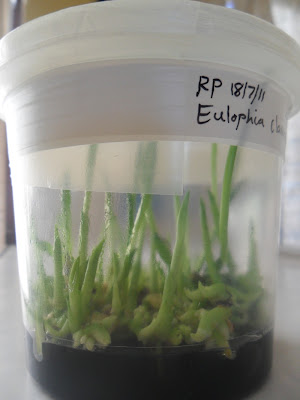Many of you who know me will know that I have never really had much enthusiasm for the Catlleya alliance. I "inherited" some seriously large and old specimen plants when I purchased the greenhouse from an elderly gentleman earlier this year. The plants were unfortunately neglected but after some loving care they recovered well and many of them have rewarded me with some exotic and very beautiful flowers. I have a new-found fondness for these flowers... and they are growing on me :). I have attached images of flowering Laeliocattleya Tropical Pointer "Galaxy" and Rhyncholaelia digbyana X (Cattleya Snowdrift X C. Eucharis). The latter gives off a very strong fragrance in the morning which fills the entire greenhouse.
 |
| Laeliocattleya Tropical Pointer "Galaxy" |
 |
| Rhyncholaelia digbyana X (Cattleya Snowdrift X C. Eucharis) |
This weekend I was invited to visit Bradley in Worcester for a hike up the mountain looking for any local species that might be in flower that we could photograph. We were keen to see if any Disa species were flowering. Apart from the odd Satyrium species that had already finished flowering and had set seeds, we came accross some very interesting species. The Disa atricapilla were out in force and we discovered quite a number of them just about to flower. Unfortunately we could not find any with open blooms. We also found a curious little yellow Ceratandra species. Bradley took some good photos of the flower to get it identified. The walk was great and it was wonderful to see these local species in their natural habitat. What surprised me the most was how confined they seem to be to isolated patches of microhabitat. You could find a significant grouping of these species together in one area but nowhere else for tens or hundreds of metres. I had a wonderful time and I hope that Bradley posts some of his images soon :)
 |
| The view |
 |
| Disa atricapilla |
 |
| Ceratandra sp. with buds |
 |
| Bradley preparing to photograph Ceratandra sp. open flower |















